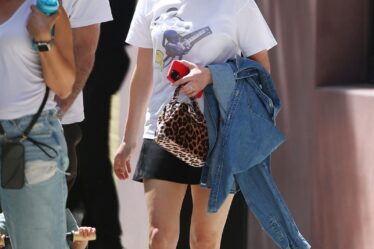
On Thursday, the Geneva Center for Business and Human Rights published a report with a damning assessment of efforts to quantify the fashion industry’s record on sustainability, chief among them The Business of Fashion’s Sustainability Index. Its authors, analyst Veronica Bates Kassatly and the Center’s director Dorothée Baumann-Pauly, did not pull punches:
“We conclude that the prevailing system falls decidedly short in assessing true sustainability,” they wrote, later adding: “A BoF Index could be helpful to all stakeholders, but only if the underlying data is significantly improved. In fact, we would suggest that BoF and other such publications are taking a risk reporting bad data as representative of achievement and should insist on better data from the sector.”
They’re not wrong.
When The Business of Fashion first conceived of the Sustainability Index, the lack of quality measures for industry progress wasn’t a thorny problem to ignore; it was the point of the exercise.
“Developing the methodology and conducting the research was a months-long process that was at once illuminating and challenging,” BoF’s chief sustainability correspondent Sarah Kent wrote in a report accompanying the first edition of the Index in 2021. “It revealed pockets of innovation and change, but was hampered by patchy reporting, poor data and a wormhole of complexity. The companies’ disclosures and approaches varied. Often, they relied on third-party certifications. Large volumes of information can mask limited action.”
According to Kent, the goal, then and now, was to measure what we could and shine a spotlight on what we couldn’t. So she and her team got to work, combing over public disclosures of the world’s largest global fashion companies with a focus on six key categories: transparency, emissions, water and chemicals, materials, workers’ rights and waste. Each company was rated on its progress towards a series of ambitious goals, set by BoF in consultation with a council of experts, and designed to align industry business practices with global environmental and social development goals by the end of the decade.
The results painted a dire picture: In the most recent Index, the average score across the 30 companies assessed was 28 out of 100. No company is on track to meet the Index targets.
Bates Kassatly and Baumann-Pauly reach a similar conclusion. But they nevertheless see the fashion industry’s patchy data as a fatal weakness of the Sustainability Index and similar efforts; in their eyes, given the lack of reliable data, scores and rankings are destined to become another tool in the fashion industry’s greenwashing arsenal. “The data that the brands are providing doesn’t match the reality, so there is no point in evaluating this data,” Bates Kassatly said in an email, adding that to do so would be “magical thinking.”
On that, Kent disagrees.
Ignoring the information companies disclose creates an accountability vacuum, allowing the industry to make claims without scrutiny or context, she said.
To be sure, a ranking system is only as good as its inputs and the information currently available is largely what companies volunteer to make public. Nonetheless, assessments like the Index offer a tool to track the industry’s efforts and enable like-for-like comparisons within the bounds of available data. Growing regulatory scrutiny of the space could also improve the quality of information BoF and other Index providers have to work with.
“It would be better if we had independent government or some kind of magical third-party data. But we don’t have that,” said Linda Greer, an environmental scientist and member of the expert council who advised on the Index’s methodology. “We’re stuck with crummy data. But I just think there is no case to be made that no data is better than that.”
Of course, it’s easy enough for companies to pluck their best scores from BoF’s Index, strip them of context and caveats, and proclaim themselves on a path toward sustainability. This information doesn’t exist in a vacuum, however; it’s dissected in reports and articles published by BoF and other outlets, which highlight where companies succeeded and fell short, as well as gaps in our knowledge.
Last year, the highest score achieved by any company was just 49 points out of 100, suggesting that there is still a substantial gap between major brands’ public commitments to sustainability and meaningful, measurable action.
Rigorous evaluations of such publicly available data, flawed or not, can create a virtuous cycle: Activists and consumers in turn have used this information — far easier to dissect than a 200-page corporate sustainability report — to put pressure on companies. Rankings can also provide an incentive inside companies to do better: There’s nothing like finding out your archrival is further along in reducing emissions to jumpstart your own efforts.
This isn’t wishful thinking: it’s just this sort of pressure that has pushed big companies to start publishing lists of where their clothes are made — disclosures that enable more robust assessments of impact by industry watchers. It’s also drawn the attention of regulators and investors, who are pushing to improve the quality and availability of environmental data, in particular, as climate risk moves up the public agenda.
“On the environmental side, we’ve seen a lot better reporting. And I do think some of these indexes, and the subsequent press, and investor and regulatory interest that comes from these indexes has resulted in some of that disclosure,” said Ayesha Barenblat, founder and CEO of Remake, an ethical fashion advocacy group that publishes its own sustainability ranking. (Barenblat is a member of the sustainability council that helped to inform the methodology behind BoF’s Index.)
The other question raised by Bates Kassatly and Baumann-Pauly is whether BoF and other index providers are measuring the right things. The researchers hold the position that the most important measure of sustainability is impact per wear, which weighs a garment’s negative effects on the environment over its projected life cycle, rather than as a fixed figure.
The researchers contend that this is a blind spot of BoF’s Sustainability Index and similar efforts. By the impact per wear standard, a company that performs relatively well in the BoF Index, but is producing garments designed to be worn once and then sent to a landfill is just as unsustainable — if not worse — than a brand with a less-stellar ranking but that makes items to last.
The impact per wear question is interesting and brings to mind a wider debate over how sustainability should be defined and measured. It’s an area Kent and the team that work on the BoF Index are following closely, with plans to continuously evolve and improve upon the assessment’s methodology, she said.
“These are all important questions to mature the work,” Greer said. “This can be helpful for a next generation of either validation, and/or additional criteria.”



